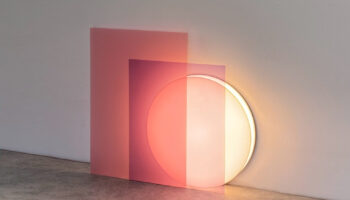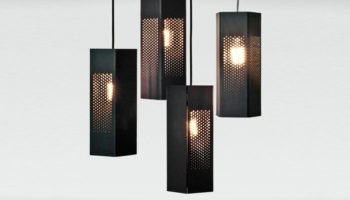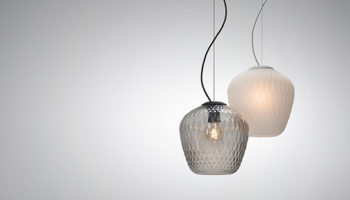Roza by Dan Piršč
If we chase down the etymology of the word "rose," perhaps we espy a clue to the plant's universal allure. A perennial plant of the genus "Rosa," the rose owes its linguistic origins to the French, via the Latin, down back to the Greek, and finally the ancient Persian term "wurdi," strictly translated as “flower.” Arguably, then, much of the Rose's metaphorical and imagistic potency is owed to its Mesopotamian origins, not to mention its "Ur" status as the proto-flower. Indeed, the Rose sets the standard not only for flowers, but also for many measures of comparative beauty. With this in mind, the only surprise attributable to Lasvit's Roza Lamp by designer Dan PirÅ¡Ä is that someone didn't conceive of it sooner.
Roza by Dan PirÅ¡Ä
All the Intricacies and None of the Insects
Apropos of the Rose, I'd make the case that children come pre-programmed with a set of instinctual appreciation for the flower, so much so that it may forestall the ability to know any other. But in view of the aura of mystery, the velutinous folds that unveil a symphony of tantalizing textures, the olfactory enchantments, the bountiful variety of operatic colors, we all could do a lot worse. PirÅ¡Ä has seized on this intrinsic attraction to model his version of Roza, "a synthesis of a classical theme… the tradition of the artificial craftsmanship with its cornerstone of handiwork is closely tied together with sculpture moulding, maintaining maximum functionality."



Said functionality shines its iridescent light through PirÅ¡Ä's artful recreations of the Rose's petals. In this case, that means a bountiful blush in tones of pink: corals, salmons, and fuschias with just a hint of darkened yellow at petal's edge, thus maintaining the organic aspect of the rose in the wild. On that score, PirÅ¡Ä's modulations of the theme capture the rose as cultivar (delicate, precious, and lonely as hung from the single stem of a pendant lamp), and as one of hundreds rising from the thorns and brambles of a roadside bush (floor lamps with swaying stems). In either case, the singular feature of this particular take on the rose is the bright bulb at the center, unconstrained and emergent, the insistent budding of a new Spring.




Leave a Reply